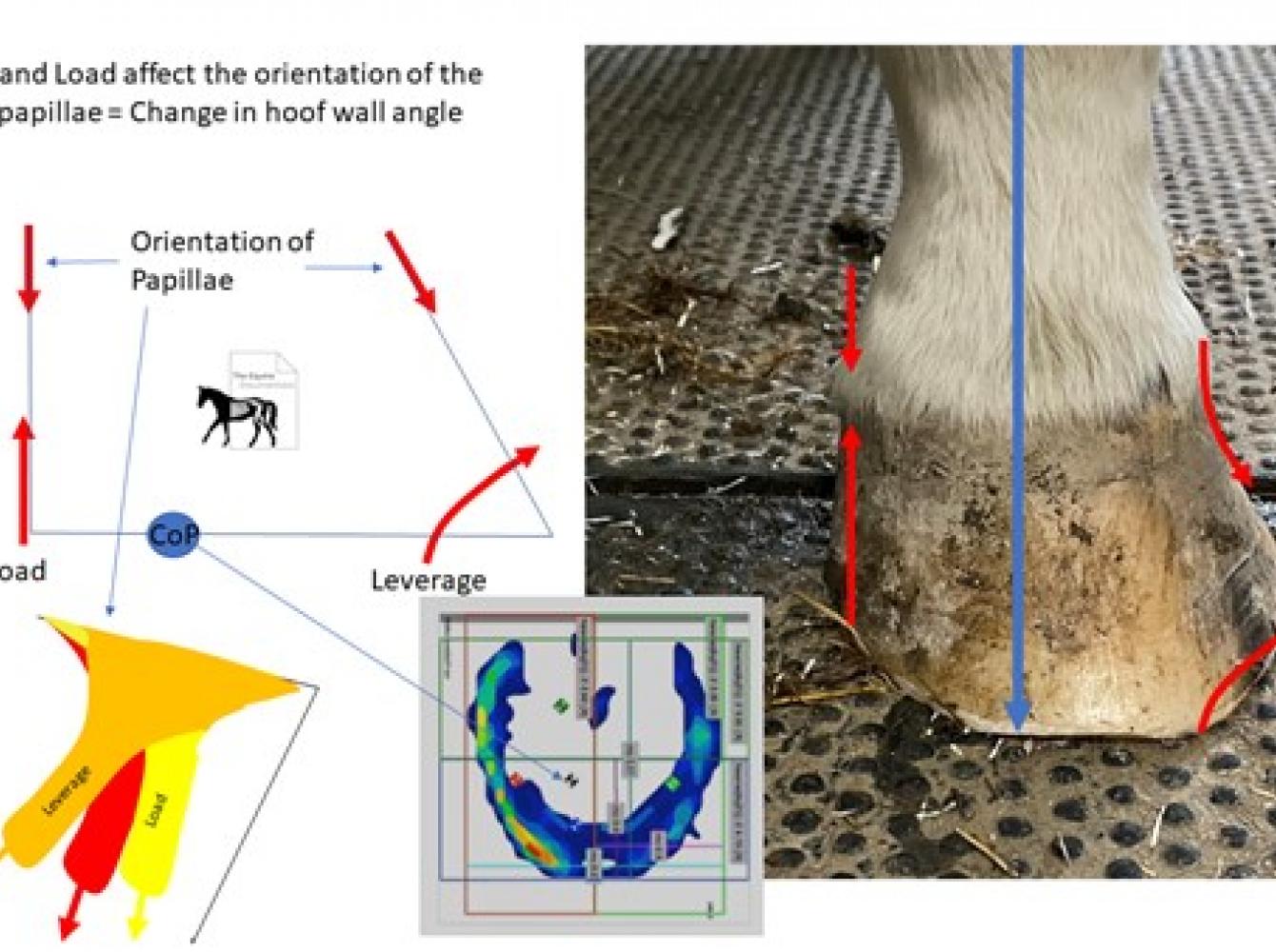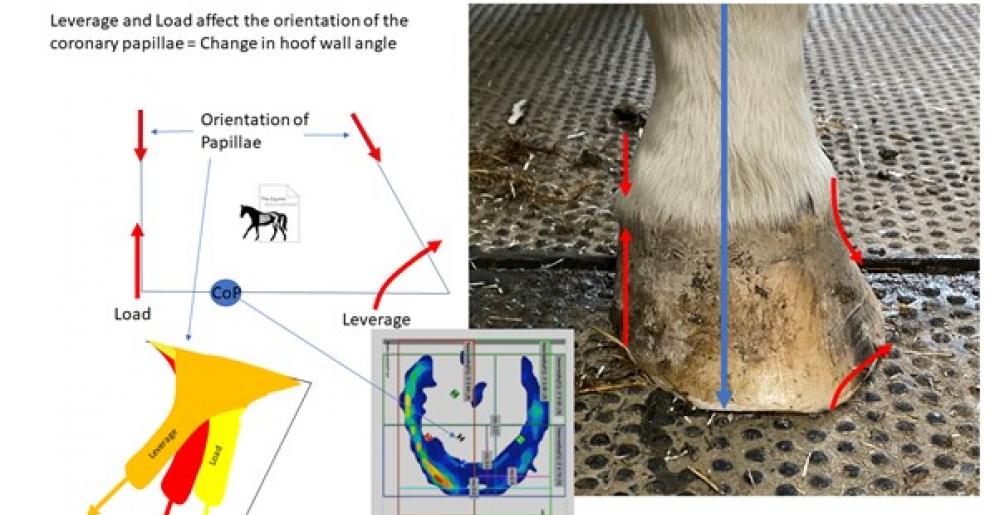
Why is creating symmetry important?
Why is creating symmetry important; written by Yogi Sharp - the Equinedocumentalist
Many of hoof morphologies we see, especially in the medio-lateral plane are caused by conformation, this isn’t a new concept.
But let’s understand the physics in a bit more depth and the theory behind why a base bisecting the gravitational load line is preferable to reduce the risk of injury and hopefully encourage more balanced growth.

Fig.1
Dr Hagen recently discussed some theories behind the differences in hoof growth.
Fig.1 shows how if the gravitational load line from the horse above lands to one side, the centre of pressure (CoP) (which is the point where the total sum of the ground reaction force (GRF) acts on the hoof, causing the force to act through that point.) is moved to that same side. Increasing load. The other side becomes leveraged. The pressure mat reading shows how one side of the hoof is constantly under increased pressure.
This influences the orientation of the papillae, where the hoof wall grows from. This change in orientation creates a physical difference in the growth angle of that side of the wall.
This additionally creates a grossly asymmetrical solar surface with further implications.
The pressure point of the solar surface of the hoof (PPSH) is calculated as the epicentre of its extremities. A point that is equal distance from every point around the edge.

Fig.2 Anecdotally, and practically, using the normal process for mapping CoR can show the PPSH. It will appear off centre. More accurately, measuring a point where equal distance from all extremities crosses would show the PPSH.
When the PPSH and the CoP are aligned it creates an even distribution of the GRF. If the PPSH (which anecdotally but interestingly can be mapped the same as the centre of rotation (CoR) Fig.2) it situated away from the CoP then the GRF will distribute in favour of the side of the CoP. This will mean on soft surfaces this side will sink further into the ground and on hard surfaces, suffer increased compression. There are obvious further implications for capsule perfusion and joint health, with the imbalance creating shear forces up the limb.
These two will never match up completely due to the feet being on the four corners of a large body, making the CoP slightly lateral in normal conformation. This being the reason for natural asymmetry in the hooves.
However, creating symmetry of the base around CoR (Fig.2) brings the PPSH and CoP closer to being on the same line, creating a more even GRF distribution. It is important to highlight that this is creating symmetry within what would be the natural confines of the hoof without distortion and not an extension beyond the natural trajectory of the coronet. Therefore, I like to call it a “Coronet support shoe” and not a “Lateral extension.
Using flat section and a fuller is a great and easy way of ensuring the heels are covered while creating this symmetry, however the new Mustad inserts can also be welded on to have the same effect.

Fig.3 The heel support and/or extension inserts would be a very practical way of creating base symmetry.